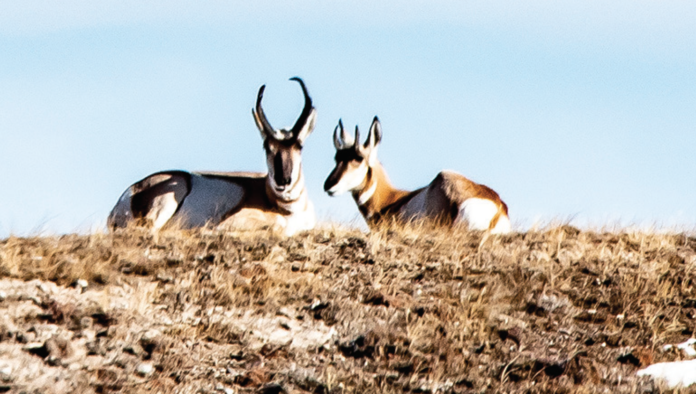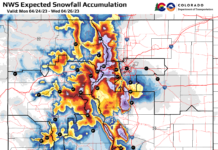
by Marissa Lorenz
Both in the midst of and following this year’s wildfires in and around Grand County, much concern has been expressed for local wildlife and the impacts being felt within their habitat. But wildlife experts assure that, though unplanned and uncontrolled fire is the last thing desired and can be devastating, “fire is an important ecological tool of forest habitat and part of a natural system.”
“Animals are pretty well adapted to fire, and it generally has a benefit on wildlife habitat” Randy Hampton of Colorado Parks & Wildlife (CPW) explains. “It’s been going on for thousands of years and is part of what animals have evolved with in the Western ecosystem. They move quickly and have ways to get around without large-scale mortality.”
“Normally when wildfire occurs,” reiterates CPW Area Manager Jeromy Huntington, “most wildlife are capable and able to move safely out of the path of fire.”
But in the case of the East Troublesome Fire, the fire spread at an unprecedented rate, growing from about 30,000 acres to 125,000 on the single night of October 21. And Huntington indicates that field experts did see a larger number of dead or injured animals who needed to be put down after that fire burst, though not at the level of population impact.
“I’ve assessed less than 20 animals and only five of those were still alive and had to be put down,” he reported last week. “When you look at the wildlife that we see active in the area that are unharmed–I’ve seen a couple hundred elk and a large number of deer moving around.”
Then Huntington shared a story in which the evidence of the natural cycle, even when it is a brutal one, works in harmony.
Huntington was having to put down an elk injured in the East Troublesome fire when he was made aware of the site of another elk carcass with a young bear sleeping next to it. There were signs of the bear having tried to get into the elk without much success. So Huntington
“skinned back the elk a little bit to make it easier for the bear to get into the hide.”
He notes that the bear didn’t have any apparent injuries and, though he checked back on the area a couple days later, he hadn’t seen the bear since. “I’m assuming he was able to have denned back up.”
“Even when we’re putting animals down,” adds Hampton, “they become part of that system. They feed the other animals that are trying to survive and make it through the coming winter.”
But what is not part of the natural system is humans feeding wildlife and in ways that cause dangerous shifts in animal behaviors.
Huntington also tells of finding what must have been several bags of bird feed dumped right at the edge of a roadway in the burn area.
“I’m assuming they were trying to help out the deer,” he notes,
“but it’s actually a good way of attracting critters to roadways and causing accidents. We also still have disease concerns, and we don’t want animal health to suffer from an unhealthy diet. … We don’t want people’s best intentions to cause unnecessary harm after all these animals have been through.”
“We have a lot of caring people in our communities and, especially after a crisis, many who want to help,” observes Hampton. “They don’t know what to do for themselves or their neighbors so they think they can do something for the animals. But sometimes good intentions can have a negative impact.
“Putting out food and water can keep the animals from doing what they should do, like move to lower elevations or find their own food source. It can end in a situation where an animal needs to be put down. It’s not an outcome we want.”
CPW recognizes the concern of the public but assures that they “are constantly monitoring body condition and health [of wildlife] throughout the winter.”
Hampton notes that there is still a lot of assessment yet to take place to determine the longer-term impact of the fires on the wildlife populations.
“We just won’t know a lot of it until spring time,” he continues. “Some of the smaller creeks hold genetically important fish and there are some reptilian species that we monitor and are concerned with. But the [East Troublesome] fire moved so fast that it jumped areas, leaving a mosaic that will still provide cover, food, et cetera.
“There will be enough forage for animals to return to those areas. There’s a lot of the ash, which is very nitrogen rich, like fertilizer. Things will grow, and young plants have a much greater nutritional value for wildlife than older plants.”
For those who would still like to help the wildlife in some way, Huntington encourages the public to “keep an eye out for opportunities to help with some of the efforts that will be happening next spring. There may be the opportunity to be involved in reseeding efforts and some habitat management this next summer.”
In the meantime, he warns to be especially careful on roadways as displaced animals and weather will be drawing wildlife closer to human habitats.
For more information from Colorado Parks & Wildlife, go to cpw.state.co.us.








